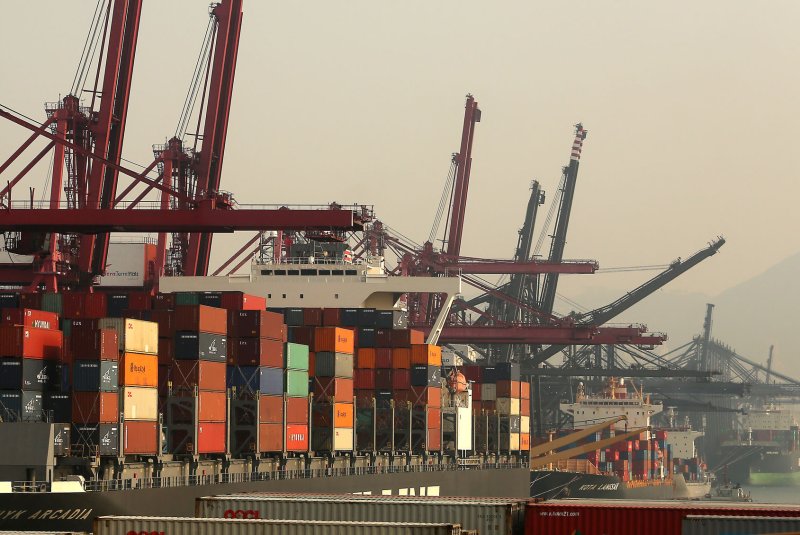All of that extra U.S. shale oil is going not to domestic refineries, but to those in Europe and Asia, the International Energy Agency found. File Photo by Stephen Shaver/UPI |
License Photo
May 7 (UPI) -- Most of the oil coming from U.S. shale basins will find its way out of the domestic market and into the Asian and European economies, analysis finds.
The U.S. federal government estimated total crude oil production averaged 10.4 million barrels per day in March and most of that is coming out of inland shale basins like the Permian play in Texas and the Bakken field in North Dakota. Total crude oil production for 2018 is expected to be 10.7 million barrels per day on average, the highest level ever, and reach 11.4 million barrels per day by next year.
According to the International Energy Agency, shale oil growth from the United States will put at least 3 million barrels per day of lighter oil on the market over the next few years. With the country now an oil exporter, and with new pipeline projects transmitting to southern port terminals, most of that new oil won't be in the United States, the world's leading economy, but in the foreign market.
Exports were banned for the 40 years following an embargo from the Arab members of the Organization of Petroleum Exporting Countries. In the midst of the shale boom, that ban was lifted under former President Barack Obama.
Before the ban was lifted, it was the U.S. refining sector that took on the additional light tight oil, or LTO. Even though most refiners were tooled to process heavier oils like the type found in Canada, the top oil exporter to the United States, domestic users absorbed the additional U.S. capacity because it was cheap.
"Market prices for crude oil and refined products are what primarily drive the choice," the IEA said.
Traders pay attention to the spread, or difference, between the price of West Texas Intermediate, the U.S. benchmark, and Brent, the global benchmark.
Analysis from commodity pricing group S&P Global Platts found Brent was supported by global supply risks, while the U.S. benchmark was bogged down by the "relentless" increase in shale oil production. The wider the spread, the more attractive WTI becomes on the global market.
In Europe, meanwhile, refiners are facing a decline in African oil, which is also a lighter type. Asian refiners, for their part, want cheap U.S. oil to feed a petrochemicals boom because LTO is suitable.
"Thus, most of the incremental output of US LTO is expected to eventually find home in Asian markets for petrochemical feedstocks and in European market as a low-sulphur, low residue yield feedstock," the IEA stated.
For the week ending April 27, the four-week moving average for U.S. crude oil exports was 1.6 million barrels per day, more than double the 753,000 barrels per day average from the previous year.















